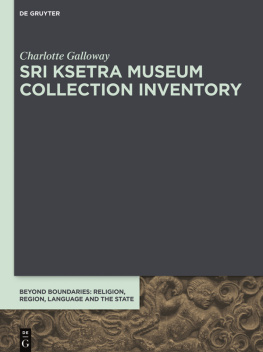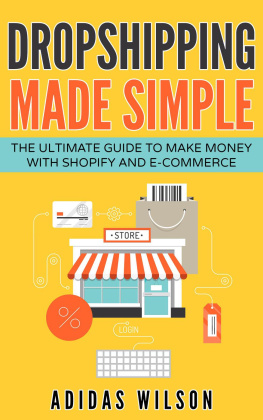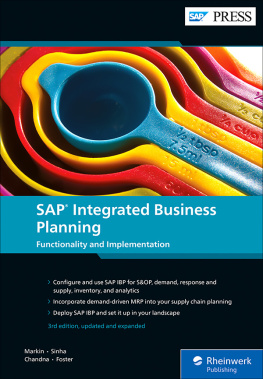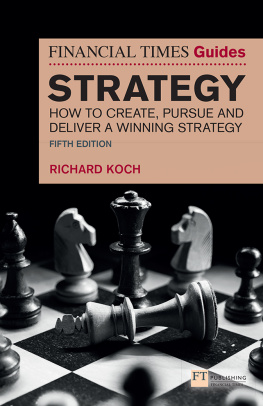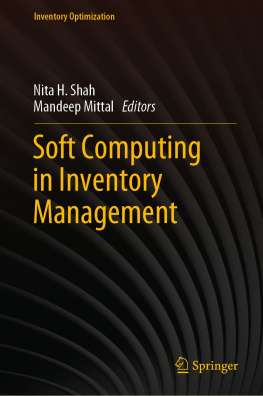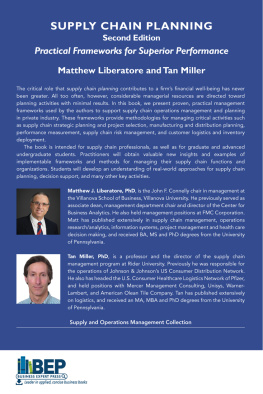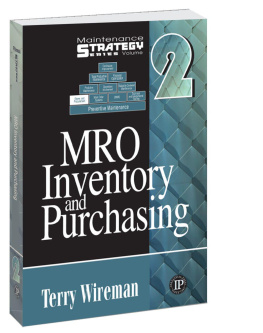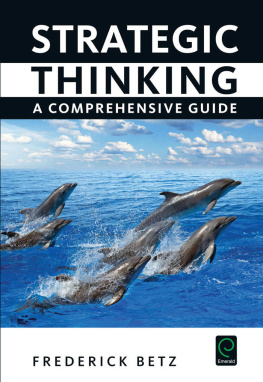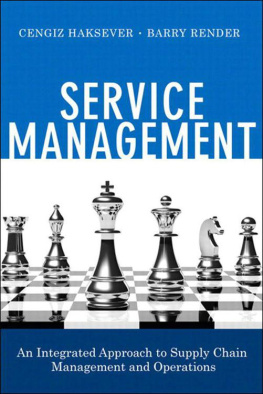Copyright 2015 by Edward H. Frazelle, PhD, and Logistics Resources International. All rights reserved. Except as permitted under the United States Copyright Act of 1976, no part of this publication may be reproduced or distributed in any form or by any means, or stored in a database or retrieval system, without the prior written permission of the publisher.
ISBN: 978-0-07-184718-6
MHID: 0-07-184718-9
The material in this eBook also appears in the print version of this title: ISBN: 978-0-07-184717-9, MHID: 0-07-184717-0.
eBook conversion by codeMantra
Version 1.0
All trademarks are trademarks of their respective owners. Rather than put a trademark symbol after every occurrence of a trademarked name, we use names in an editorial fashion only, and to the benefit of the trademark owner, with no intention of infringement of the trademark. Where such designations appear in this book, they have been printed with initial caps.
RightBuys, RightCard, RightCast, RightChain, and other related products are trademarks of Logistics Resources International.
McGraw-Hill Education eBooks are available at special quantity discounts to use as premiums and sales promotions or for use in corporate training programs. To contact a representative, please visit the Contact Us page at www.mhprofessional.com.
TERMS OF USE
This is a copyrighted work and McGraw-Hill Education and its licensors reserve all rights in and to the work. Use of this work is subject to these terms. Except as permitted under the Copyright Act of 1976 and the right to store and retrieve one copy of the work, you may not decompile, disassemble, reverse engineer, reproduce, modify, create derivative works based upon, transmit, distribute, disseminate, sell, publish or sublicense the work or any part of it without McGraw-Hill Educations prior consent. You may use the work for your own noncommercial and personal use; any other use of the work is strictly prohibited. Your right to use the work may be terminated if you fail to comply with these terms.
THE WORK IS PROVIDED AS IS. McGRAW-HILL EDUCATION AND ITS LICENSORS MAKE NO GUARANTEES OR WARRANTIES AS TO THE ACCURACY, ADEQUACY OR COMPLETENESS OF OR RESULTS TO BE OBTAINED FROM USING THE WORK, INCLUDING ANY INFORMATION THAT CAN BE ACCESSED THROUGH THE WORK VIA HYPERLINK OR OTHERWISE, AND EXPRESSLY DISCLAIM ANY WARRANTY, EXPRESS OR IMPLIED, INCLUDING BUT NOT LIMITED TO IMPLIED WARRANTIES OF MERCHANTABILITY OR FITNESS FOR A PARTICULAR PURPOSE. McGraw-Hill Education and its licensors do not warrant or guarantee that the functions contained in the work will meet your requirements or that its operation will be uninterrupted or error free. Neither McGraw-Hill Education nor its licensors shall be liable to you or anyone else for any inaccuracy, error or omission, regardless of cause, in the work or for any damages resulting therefrom. McGraw-Hill Education has no responsibility for the content of any information accessed through the work. Under no circumstances shall McGraw-Hill Education and/or its licensors be liable for any indirect, incidental, special, punitive, consequential or similar damages that result from the use of or inability to use the work, even if any of them has been advised of the possibility of such damages. This limitation of liability shall apply to any claim or cause whatsoever whether such claim or cause arises in contract, tort or otherwise.
This book is dedicated to my Lord, Savior, Best Friend, and Teacher, Jesus Christ, Who blessed me with the experiences and abilities to share these lessons. This book is also dedicated to my gorgeous wife, Pat, who for 27 years has patiently allowed me to have these experiences and encouraged me in them. Finally, this book is dedicated to our two children, Kelly and Andrew; none finer.
CONTENTS
LIST OF FIGURES
CHAPTER 1
CHAPTER 2
CHAPTER 3
CHAPTER 4
PREFACE
I have been consulting, teaching, and researching in supply chain strategy for 30+ years. I have traveled in more than 72 countries, worked in countless industries, and faced what seems to be the full gauntlet of supply chain issues. Over the last three years the Lord led me through a series of very intense projects with a common focus: inventory. From mining, to food, to aerospace, to retail, to electronics, to computing, to consumer packaged goods, to bottling, in North America, South America, Europe, and Asia, nearly every project had inventory optimization at the heart of it. In addition, many of the projects resulted in highly profitable increases in inventory levels. In one amazing sequence of projects the very distribution center we helped Hallmark close as a part of its inventory reduction was acquired by Coca-Cola Consolidated as part of our inventory expansion with that company.
I am not normally led through those types of themed experiences unless the Lord has a strong lesson for me and my clients in it. I asked Him what His message was for this time. He seemed to be saying, Inventory strategy. I asked Him, Lord, why inventory strategy? He seemed to be saying, Because people are so consumed with reducing inventory in the face of circumstances where more is required that they are becoming overwhelmed. My Ways are not those of lack and lean but of abundance and blessing. What some call waste, I call margin: the margin needed to balance life at work, life with family, and life with Me. What some call waste, I call an opportunity to generously give to others.
He also does not seem to be too happy with the inventory shell games that go on and the idolatry of companies known for their inventory prowess that have hidden their inventory in their suppliers warehouses.
In the middle of this year I hit an unusual lull between projects. To fill the time I began to write a playbook on inventory management requested by one of our clients. At the Lords prompting, the playbook slowly started to take the form of a real book. Thats what you are reading: an inventory playbook demonstrating that less is not always more and more is not always less and advising you to run the numbers to figure it out.
I have watched highly effective professionals struggle in deciding how much inventory to carry. They are beat up, thrown under the bus, and sometimes let go if they have too much inventory, have too little inventory, or cant figure out where to locate it. The struggle often comes because inventory is a business matter, a financial matter, a service matter, and an operational matter. Inventory levels also are related to the performance of manufacturing, procurement, transportation, and sales. Sometimes inventory is an asset, and sometimes a liability. All these things are true. The inability to rationalize and optimize inventory across those interdependent and fluctuating concerns is normally the root of the conflicts and strife. Inventory Strategy and our RightStock model are attempts to unify and rationalize those often conflicting views and perspectives.
After I taught this approach in a recent seminar in Tokyo I had an unusual question from a lady in the audience. She asked, Dr. Frazelle, if we figure this out, what will we do with our time? I could tell the Lord wanted to speak directly to her and many in the audience. He gave me a vision of the late and sleepless nights she was enduring under the stress and how much her family needed her and missed her. I responded, Maam, inventory is not a hill worth dying on. When you apply this approach, you can spend time with your family and God and take some time to rest. She and my translator started to cry. Even I started to tear up. There is a way through these issues that does not require the 7 24 365 strain under which so many supply chain professionals work. This book is my best attempt to show a less stressful and more peaceful way through the myriad and mazelike issues inherent in inventory and supply chain strategy.


